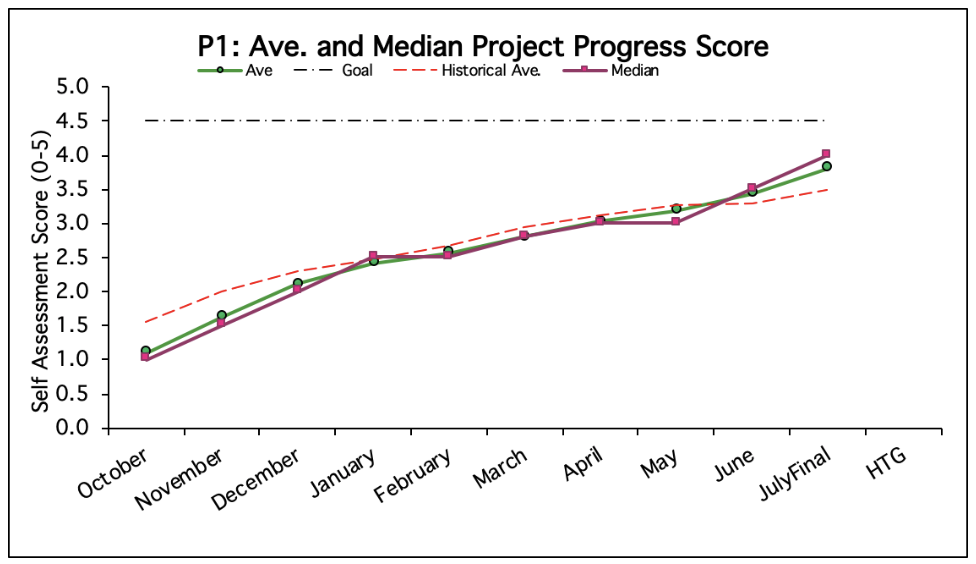Improvement projects follow a trajectory from forming a team and chartering through achieving sustainable results. Whether leading a single project or monitoring a portfolio, having a strategy for gauging project progress is useful in identifying projects that are stuck and in supporting movement forward.
One useful tool the Institute for Healthcare Improvement created for use in Breakthrough Series Collaboratives is the Project Progress Assessment Scale. You can download the Assessment Scale on IHI.org. Here is the scale and the definition for each stage.
| Table – Project Progress Assessment Scale | |
| Assessment/Description | Definition |
| 1.0 Forming team |
Team has been formed; target population identified; aim determined and baseline measurement begun. |
| 1.5 Planning for the project has begun |
Team is meeting, discussion is occurring. Plans for the project have been made. |
| 2.0 Activity, but no changes |
Team actively engaged in development, research, discussion but no changes have been tested. |
| 2.5 Changes tested, but no improvement |
Components of the model being tested but no improvement in measures. Data on key measures are reported. |
| 3.0 Modest improvement |
Initial test cycles have been completed and implementation begun for several components. Evidence of moderate improvement in process measures. |
| 3.5 Improvement |
Some improvement in outcome measures, process measures continuing to improve, PDSA test cycles on all components of the Change Package, changes implemented for many components of the Change Package. |
| 4.0 Significant improvement |
Most components of the Change Package are implemented for the population of focus. Evidence of sustained improvement in outcome measures, halfway toward accomplishing all of the goals. Plans for spreading the improvement are in place. |
| 4.5 Sustainable improvement |
Sustained improvement in most outcomes measures, 75% of goals achieved, spread to a larger population has begun. |
| 5.0 Outstanding sustainable results |
All components of the Change Package implemented, all goals of the aim have been accomplished, outcome measures at national benchmark levels, and spread to another facility is underway. |
| IHI (2004). Assessment Scale for Collaboratives. IHI: Boston, Ma | |
Project teams shall regularly review their project progress against the operational definition of the assessment scale and identify where their work currently sits. If reporting to a sponsor or steering group, the assessment will be included in the project report.
An Improvement Advisor or sponsor shall review the report and confirm the assessment. It’s not uncommon for a project team to be feeling good about their learning or activity and overassess their project when there are no changes being tested or signals of change in their measures.
If you have a learning system established that is looking at a portfolio of projects or a collaborative of project teams, you may want to to display the progress each month in a histogram to see the distribution.

You may also want to show the mean progress scale per month over time.

Projects teams frequently get stuck. They may be forming and planning but be slow to start testing changes or they are testing changes but not seeing any change in their process measures. The assessment scale supports you to see if teams are not progressing and sometimes a nudge or advice on how to move forward can aid a team’s progress.
Other measures can complement the assessment scale, including the number of PDSA’s completed in the month, participation in calls or meetings, reporting, updating data.
—
If this was helpful, share and include me @DaveWilliamsATX. Sign up here to receive a monthly email from me that includes all my blog posts and other Improvement Science resources I think you’d appreciate.
